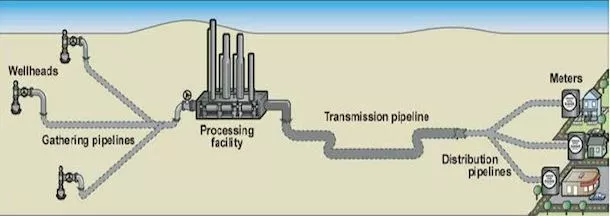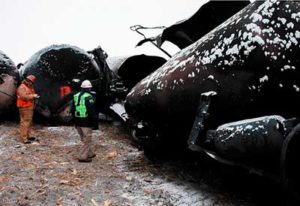Gathering pipelines move gas and oil from drilling sites to processing plants, refineries, and transmission and distribution pipelines. The Pipeline and Hazardous Materials Safety Administration (PHMSA) estimates that there are 240,000 miles of onshore gathering lines nationwide, but the rapid growth in domestic oil and gas production means there could be much more than that.
Environmental and safety concerns have increased as oil and gas companies construct new kinds of gathering lines with much larger diameters and operating pressures to accommodate shale development.

PHMSA generally oversees gathering lines, but little information is available about their number, length, location, or condition. PHMSA may regulate gathering lines only in more densely populated and developed areas, as that’s where safety risks for people are presumed to be the greatest.
This means that gathering lines are essentially unregulated in most areas—where most oil and gas drilling occurs. Some utility commissions have responsibility for gathering lines, but regulation remains limited on the state level. PHMSA estimates only about 5% of gas gathering lines are subject to federal safety regulations. In 2016, PHMSA proposed new regulations to expand federal oversight of gathering lines.
For More Information
- Commonwealth of Pennsylvania Report To The General Assembly On Pipeline Placement Of Natural Gas Gathering Lines
- PHMSA FAQ
- Department of Transportation Safety of Gas Transmission and Gathering Pipelines

